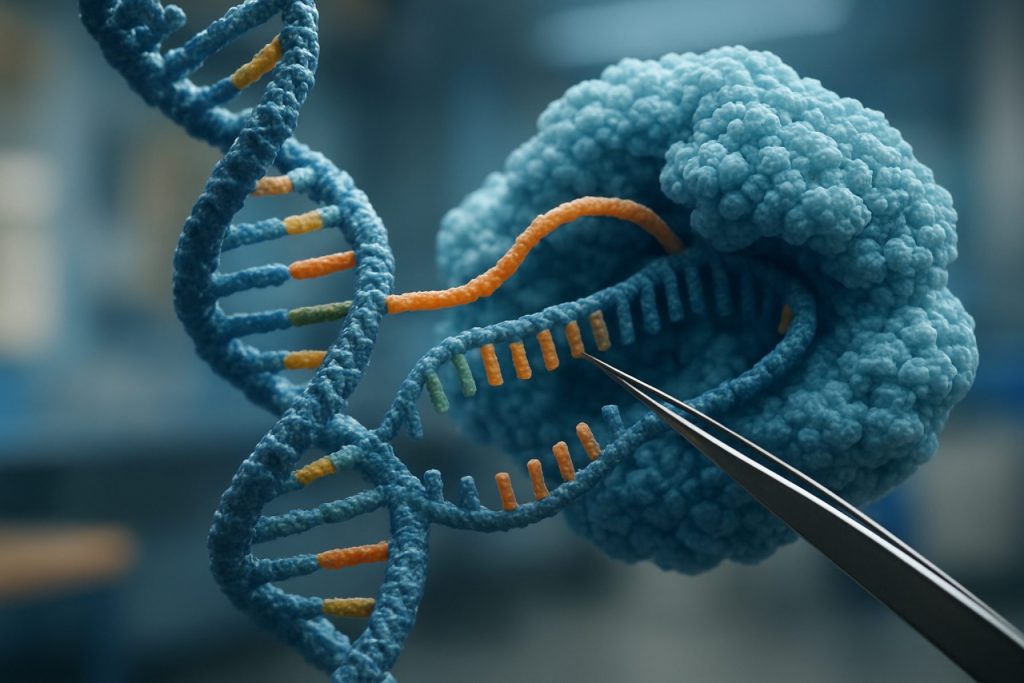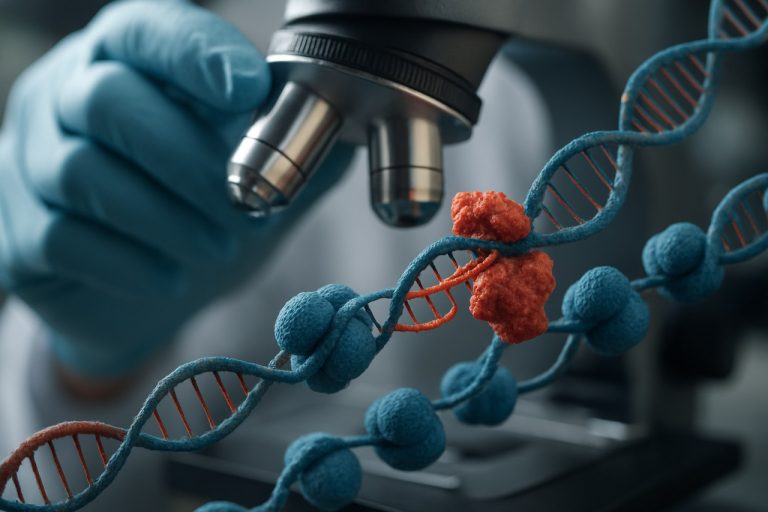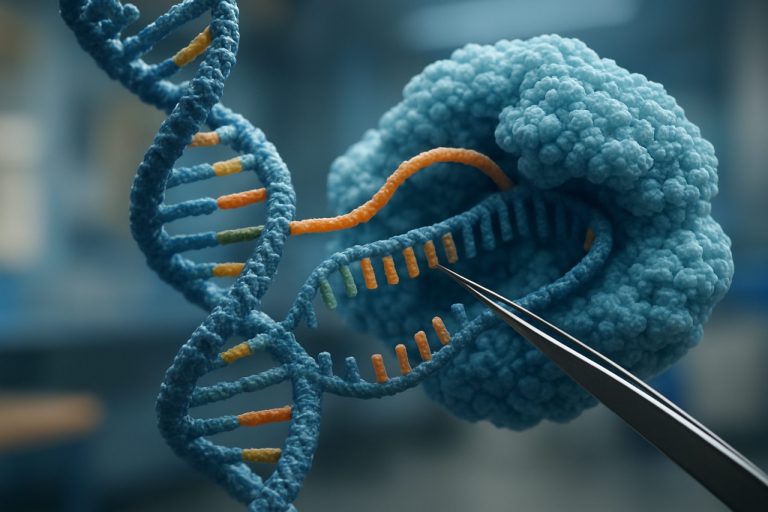
Revolutionizing Gene Expression: How CRISPR-Mediated Epigenome Engineering is Transforming Biomedical Science. Discover the Next Frontier in Precision Medicine and Genetic Research.
- Introduction to CRISPR-Mediated Epigenome Engineering
- Mechanisms of CRISPR-Based Epigenetic Modulation
- Key Tools and Technologies in Epigenome Editing
- Applications in Disease Modeling and Therapeutics
- Challenges and Limitations of Current Approaches
- Ethical Considerations and Regulatory Landscape
- Future Directions and Emerging Innovations
- Sources & References
Introduction to CRISPR-Mediated Epigenome Engineering
CRISPR-mediated epigenome engineering is an innovative approach that leverages the precision of CRISPR/Cas systems to modulate gene expression without altering the underlying DNA sequence. Unlike traditional genome editing, which introduces permanent genetic changes, epigenome engineering targets the chemical modifications—such as DNA methylation and histone modifications—that regulate gene activity. By fusing catalytically inactive Cas9 (dCas9) with various effector domains, researchers can direct these complexes to specific genomic loci, enabling the activation or repression of target genes in a reversible and programmable manner. This technology has rapidly expanded the toolkit for functional genomics, disease modeling, and potential therapeutic interventions.
The versatility of CRISPR-mediated epigenome engineering lies in its ability to target virtually any gene or regulatory element with high specificity, guided by customizable single-guide RNAs (sgRNAs). Applications range from dissecting the roles of enhancers and silencers in gene regulation to reprogramming cell fate and correcting aberrant epigenetic states associated with diseases such as cancer and neurological disorders. Recent advances have improved the efficiency, specificity, and multiplexing capabilities of these systems, paving the way for more sophisticated studies of gene regulatory networks and the development of epigenetic therapies. As the field evolves, ongoing research is focused on optimizing delivery methods, minimizing off-target effects, and understanding the long-term consequences of epigenetic modifications in vivo Nature Reviews Genetics Cell.
Mechanisms of CRISPR-Based Epigenetic Modulation
CRISPR-mediated epigenome engineering leverages the programmable DNA-binding capability of catalytically inactive Cas9 (dCas9) fused to various effector domains to modulate gene expression without altering the underlying DNA sequence. The core mechanism involves guiding dCas9 to specific genomic loci using single guide RNAs (sgRNAs), where it recruits epigenetic modifiers to enact targeted changes in chromatin state. For gene activation, dCas9 is commonly fused to transcriptional activators such as VP64, p300, or SunTag systems, which deposit activating histone marks (e.g., H3K27ac) or recruit the transcriptional machinery, thereby enhancing gene expression. Conversely, gene repression is achieved by fusing dCas9 to repressor domains like KRAB, which promote heterochromatin formation through recruitment of histone methyltransferases and other silencing complexes, leading to deposition of repressive marks such as H3K9me3 and subsequent transcriptional silencing Nature Reviews Genetics.
Beyond histone modifications, CRISPR-based systems have been adapted to target DNA methylation. Fusion of dCas9 to DNA methyltransferases (e.g., DNMT3A) or demethylases (e.g., TET1) enables locus-specific addition or removal of methyl groups at CpG sites, providing a powerful tool for dissecting the functional consequences of DNA methylation in gene regulation Cell. Multiplexing capabilities allow simultaneous targeting of multiple loci, enabling complex epigenetic reprogramming. These approaches offer high specificity and reversibility, making CRISPR-based epigenetic modulation a versatile platform for functional genomics, disease modeling, and potential therapeutic interventions Nature Reviews Genetics.
Key Tools and Technologies in Epigenome Editing
CRISPR-mediated epigenome engineering leverages the programmable DNA-binding capability of the CRISPR-Cas9 system, particularly using catalytically inactive Cas9 (dCas9), to target specific genomic loci without inducing double-strand breaks. The key innovation lies in fusing dCas9 to various effector domains that can modulate chromatin states and gene expression. Among the most widely used effectors are DNA methyltransferases (e.g., DNMT3A), demethylases (e.g., TET1), histone acetyltransferases (e.g., p300), and histone deacetylases (e.g., HDACs). These fusions enable locus-specific addition or removal of epigenetic marks, such as DNA methylation or histone modifications, thereby controlling gene activity in a reversible and tunable manner.
Recent advances have expanded the CRISPR toolbox to include systems like CRISPR interference (CRISPRi) and CRISPR activation (CRISPRa), which use dCas9 fused to transcriptional repressors (e.g., KRAB) or activators (e.g., VP64, p65, Rta) to modulate gene expression without altering the underlying DNA sequence. Multiplexing strategies, using multiple guide RNAs, allow simultaneous targeting of several loci, enabling complex epigenetic reprogramming. Additionally, inducible and reversible systems, such as those based on light or small molecules, provide temporal control over epigenetic modifications.
Emerging technologies, including base editors and prime editors, are being adapted for epigenome editing, further enhancing specificity and minimizing off-target effects. The integration of single-cell and high-throughput screening approaches is accelerating the functional annotation of regulatory elements and the discovery of novel epigenetic mechanisms. Collectively, these tools are transforming our ability to dissect and manipulate the epigenome with unprecedented precision Nature Reviews Genetics Cell.
Applications in Disease Modeling and Therapeutics
CRISPR-mediated epigenome engineering has rapidly emerged as a transformative tool in disease modeling and therapeutic development. By fusing catalytically inactive Cas9 (dCas9) with epigenetic modifiers, researchers can precisely modulate gene expression without altering the underlying DNA sequence. This approach enables the reversible activation or repression of target genes, providing a powerful platform for dissecting gene function and modeling disease states in vitro and in vivo. For example, dCas9-based systems have been used to recapitulate disease-associated epigenetic changes in cellular models, allowing for the study of complex disorders such as cancer, neurodegeneration, and imprinting diseases Nature Reviews Genetics.
In therapeutics, CRISPR-mediated epigenome editing offers the potential to correct aberrant gene expression profiles underlying various diseases. Unlike traditional gene editing, which introduces permanent DNA changes, epigenome engineering can achieve therapeutic effects through transient and potentially reversible modifications. This is particularly advantageous for conditions where precise temporal control of gene expression is required or where permanent genetic alterations pose safety concerns. Recent preclinical studies have demonstrated the feasibility of using dCas9-epigenetic effector fusions to reactivate silenced tumor suppressor genes or repress oncogenes in cancer models, as well as to modulate genes implicated in neurological and metabolic disorders Cell.
Despite these advances, challenges remain, including efficient delivery to target tissues, minimizing off-target effects, and ensuring long-term safety. Ongoing research aims to optimize delivery systems and refine effector specificity, paving the way for clinical translation of CRISPR-based epigenome therapeutics Nature Biotechnology.
Challenges and Limitations of Current Approaches
Despite the transformative potential of CRISPR-mediated epigenome engineering, several challenges and limitations hinder its widespread application and clinical translation. One major concern is the specificity of targeting. While CRISPR-dCas9 systems can be programmed to bind specific genomic loci, off-target binding and unintended epigenetic modifications remain significant risks, potentially leading to unpredictable gene expression changes or genomic instability. Efforts to improve guide RNA design and engineer high-fidelity dCas9 variants are ongoing, but complete elimination of off-target effects has not yet been achieved Nature Reviews Genetics.
Another limitation is the efficiency and durability of epigenetic modifications. Unlike permanent genetic edits, epigenetic changes induced by CRISPR-based effectors can be transient or reversible, especially in dividing cells where chromatin states are dynamically regulated. This poses challenges for applications requiring long-term gene regulation, such as in therapeutic contexts Cell. Additionally, the delivery of large CRISPR-dCas9 fusion proteins and associated guide RNAs into target cells or tissues remains technically challenging, particularly in vivo, where delivery vehicles must overcome biological barriers and avoid immune responses Nature Biotechnology.
Finally, the complexity of the epigenome itself presents a challenge. The interplay between different epigenetic marks and their context-dependent effects on gene expression are not fully understood, making it difficult to predict the outcomes of targeted modifications. As a result, comprehensive preclinical studies and improved mechanistic insights are essential before CRISPR-mediated epigenome engineering can be safely and effectively applied in clinical settings.
Ethical Considerations and Regulatory Landscape
CRISPR-mediated epigenome engineering, which enables precise and reversible modifications of gene expression without altering the underlying DNA sequence, raises unique ethical and regulatory challenges distinct from those associated with traditional genome editing. One major ethical consideration is the potential for unintended off-target effects, which could lead to unpredictable changes in gene regulation and downstream biological consequences. This risk is particularly salient in clinical applications, where long-term safety data are limited. Additionally, the ability to modulate gene expression in a heritable or non-heritable manner blurs the line between somatic and germline interventions, complicating existing ethical frameworks and oversight mechanisms.
From a regulatory perspective, the landscape is still evolving. In the United States, the U.S. Food and Drug Administration oversees gene therapy products, but there is ongoing debate about how to classify and regulate epigenome editing tools, especially those that do not introduce permanent genetic changes. The European Medicines Agency and other international bodies are similarly grappling with how to adapt current guidelines to address the unique risks and benefits of epigenetic interventions. Issues such as informed consent, equitable access, and potential misuse for non-therapeutic enhancements further complicate the regulatory environment.
As the technology advances, there is a growing consensus on the need for robust ethical oversight, transparent public engagement, and international harmonization of regulatory standards to ensure responsible development and application of CRISPR-mediated epigenome engineering Nature Biotechnology.
Future Directions and Emerging Innovations
The future of CRISPR-mediated epigenome engineering is poised for transformative advances, driven by innovations in both tool development and application scope. One promising direction is the refinement of CRISPR-based epigenetic editors to achieve higher specificity and reduced off-target effects. This includes engineering novel dCas9 fusion proteins with improved targeting precision and the ability to modulate a broader array of epigenetic marks, such as histone modifications and non-coding RNA interactions, beyond DNA methylation and acetylation Nature Reviews Genetics.
Another emerging innovation is the integration of inducible and reversible systems, allowing for temporal control of epigenetic modifications. These systems enable researchers to study dynamic gene regulation and cellular memory with unprecedented resolution, which is crucial for understanding development, disease progression, and therapeutic responses Cell. Additionally, multiplexed epigenome editing—simultaneously targeting multiple loci or epigenetic marks—holds promise for dissecting complex gene regulatory networks and synthetic biology applications.
In the translational realm, CRISPR-mediated epigenome engineering is being explored for therapeutic interventions in diseases with epigenetic underpinnings, such as cancer, neurodegenerative disorders, and imprinting diseases. The development of delivery systems that are both efficient and cell-type specific remains a critical challenge, but advances in nanoparticle and viral vector technologies are rapidly expanding the feasibility of in vivo applications Nature Biotechnology.
Overall, the convergence of CRISPR technology with epigenetics is expected to unlock new frontiers in basic research, disease modeling, and precision medicine, heralding a new era of programmable gene regulation.



